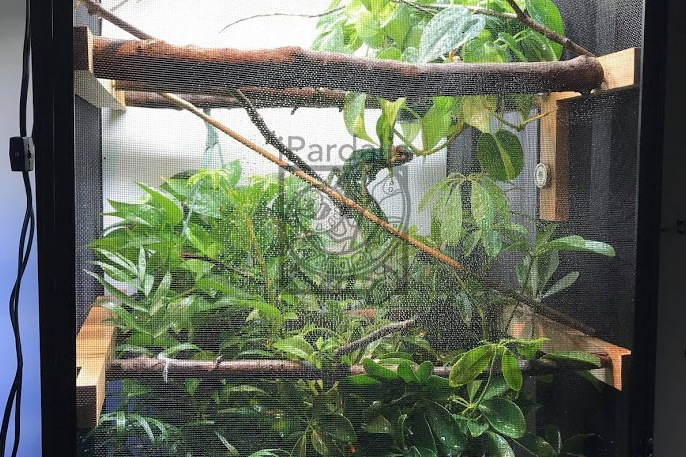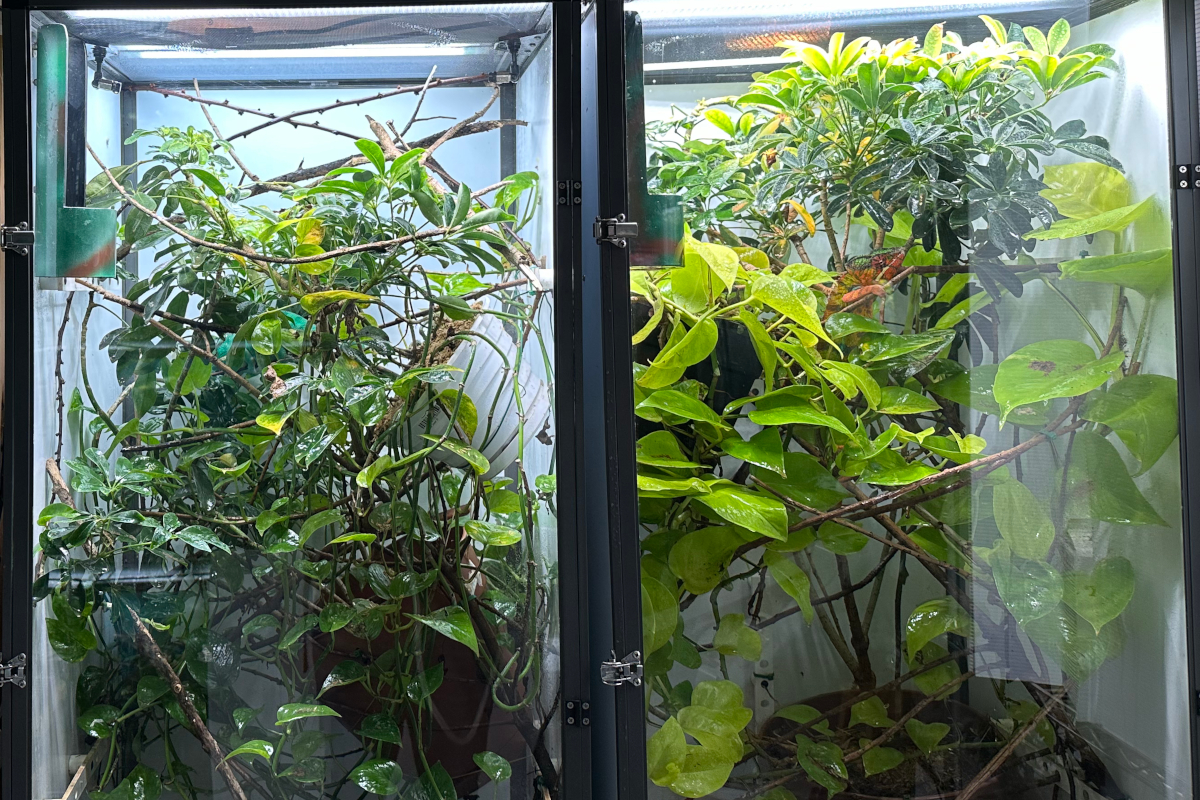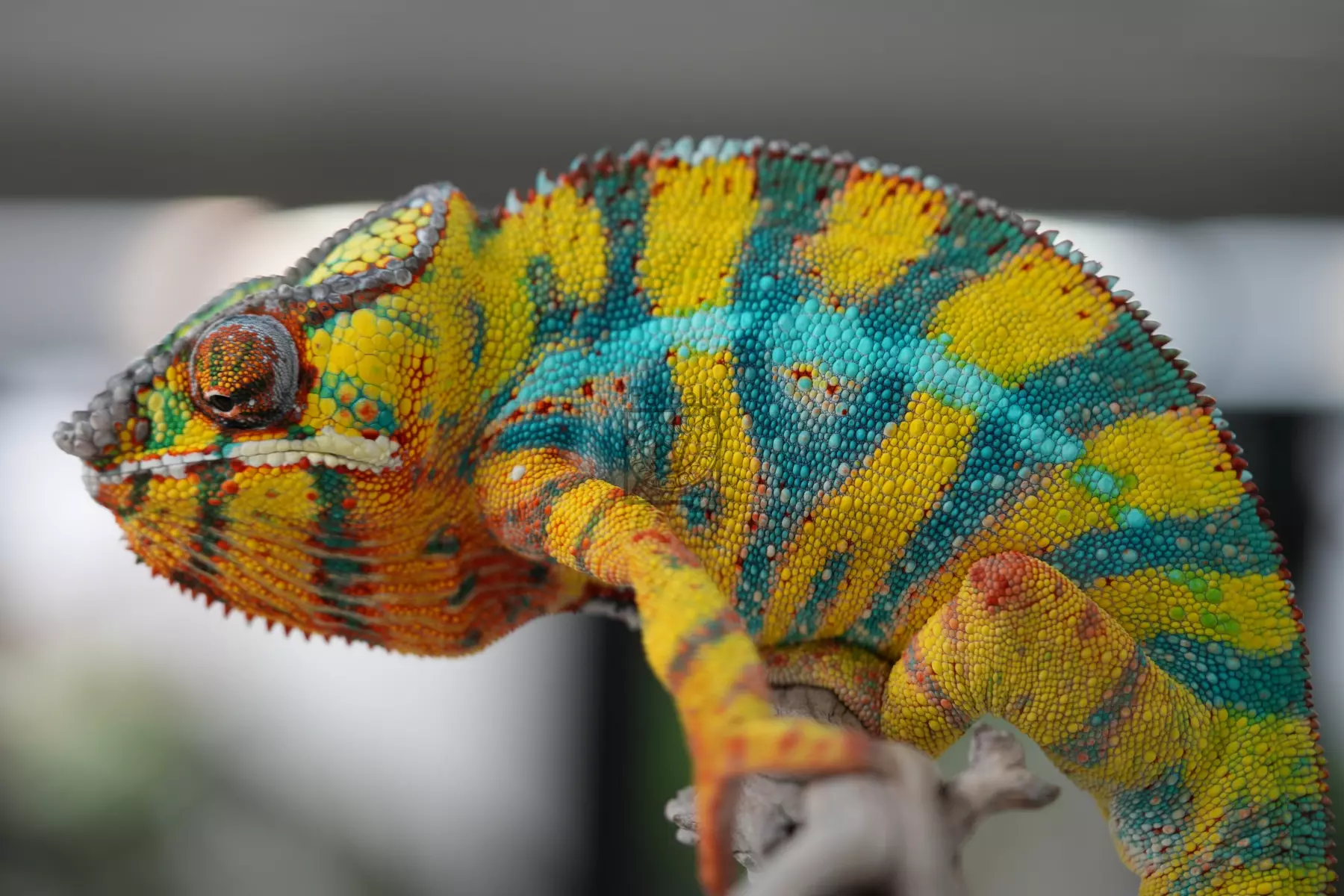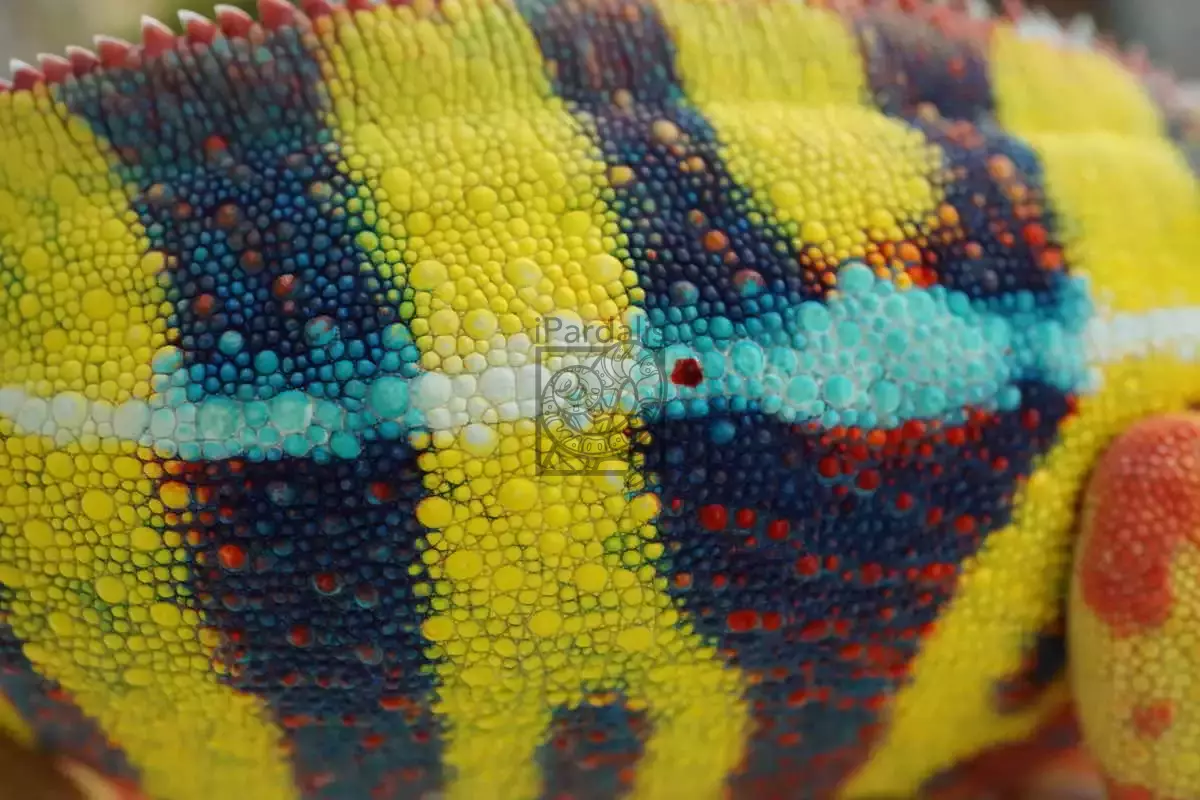Go Back
Our Adult Panther Chameleons are an ideal choice for individuals concerned about the care and acclimatization of juvenile or subadult specimens. Their mature and established nature ensures a more predictable temperament, making them particularly suitable for those seeking a chameleon companion with a well-defined disposition. Additionally, these adult chameleons showcase their full adult coloration, providing enthusiasts with the immediate visual satisfaction of their stunning appearance. Their readiness for breeding, coupled with their adaptability to captive environments, further reinforces the appeal of our Adult Panther Chameleons as a reliable and rewarding choice.
(9+ months old)
Automatic volume discounts on 2+ animals
How do you house adult Panther Chamelelons?

Our adults are housed in hybrid bioactive enclosures. You can see low branches running down near the substrate where there is shade, security and humidity, and at the top, there is heat, uvb and lower humidity. There are Coroplast sheets super glued to the frame to maintain heat and humidity without closing it off entirely. We are always thinking of ways to improve (thank you Frank Payne for the suggestion on the Coroplast sheets - they are great!).

iPardalis listings are exclusively juveniles or older - no hatchlings or eggs - we do not sell juveniles under 12 grams of weight regardless of their age. Every iPardalis Panther Chameleon has a life-long guarantee. Whatever issue you encounter, even years later, we want to be part of the solution. Keep in touch, and we will ensure that you have a positive experience.
Visit our Facebook or Instagram for regular updates on our project. Our blog covers Panther Chameleon genetics, ethics, photography, podcasts, husbandry and more.
Please let us know if you have any questions about our Adult Panther Chameleons for sale.



